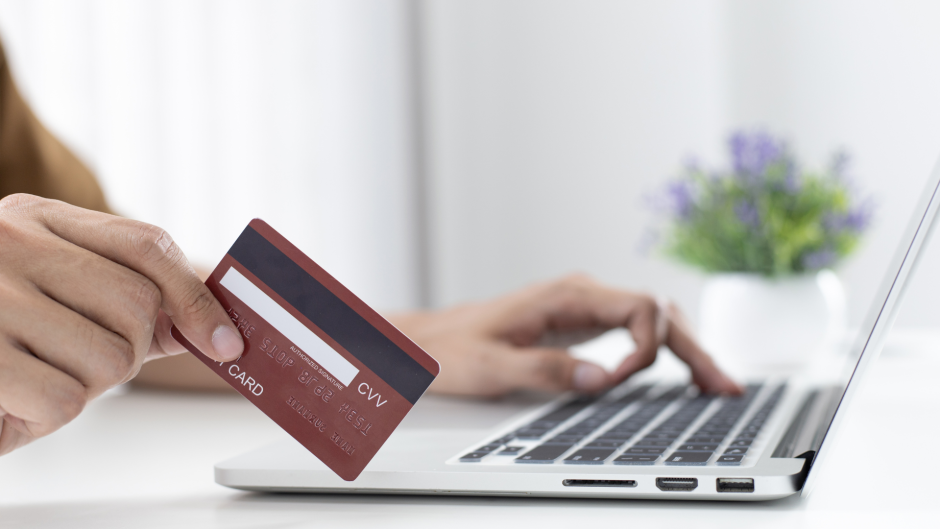Credit cards are one of the most popular forms of payment. They’re convenient, they’re safe, and they’re often a requirement for people who want to buy things. But what are the pros and cons of using credit cards? How do they work? And is using a credit card always the best option?
In this blog post, you’ll learn all about credit cards – what they are, how they work, and the different types available to you. You’ll also explore some of the bad news associated with them (e.g. interest rates, debt accumulation), and figure out which type of card is best for you.
What is a Credit Card?
When you think of a credit card, what comes to mind? Most likely, it’s convenient and has the potential for rewards that come with using one. But what are the downsides? And is credit card use all that bad?
The Good: Credit cards offer consumers access to loans they might not be able to get otherwise. They allow people to build up their credit scores, increasing their chances of getting approved for other types of loans.
And finally, many credit cards offer 0% interest rates on purchases for a certain period – usually 3 or 6 months – which can be very attractive when comparing alternatives.
The Bad: A few things to watch out for when using a credit card. First, always be aware of your monthly payments and how much debt you’re carrying overall – this can impact your overall financial stability in the long run.
Second, make sure you understand the terms and conditions of your card before signing up. If there are any hidden costs or fees associated with using it, be sure to know about them.
And lastly, don’t spend more than you can afford to pay back if you cannot meet your monthly payments or max out your available borrowing limit. It’s time to rethink your spending habits and consider other options.
How to Pick the Right Credit Card for You
Credit cards are an important part of most people’s financial lives. But which one is right for you?
There are various things to consider when selecting a credit card, including your spending habits, credit score, and investment goals. Here are some general tips for choosing the right card for you.
1. Decide What Type of Credit You Have
One of the first things important to consider is your credit score. A good credit score will get you approved for a card with low-interest rates and can lead to better borrowing opportunities in the future. To find out your credit score, use a free resource like CreditKarma or FICO.
2. Consider Your Spending Habits
Next, consider how you spend your money. Some card companies like Capital One can offer a plethora of rewards programs that can boost your wallet if you are diligently using them. You can explore their credit card reward programs through get my offer capitalone com which may include cash backs, points, and miles. Additionally, these cards may offer various additional benefits such as travel rewards and low interest rates.
3. Consider Your Investment Goals
Another factor to consider is your investment goals. Cards with higher APRs might not be the best option if you’re looking to save money on your monthly bills. For example, the American Express Platinum Card offers a 0% APR on Purchases and Balance Transfers for 18 months and no annual fees. If you want to maximize your return on investment, consider a card with a lower APR.
4. Consider Your Needs
Finally, think about what you need from a credit card. While some individuals might be in search of a straightforward card to manage daily expenses, others could be drawn to rewards cards that provide additional benefits and special offers. Moreover, a growing number of consumers are exploring alternatives to traditional cards, such as digital wallets. These wallets, like the increasingly popular Paze, tend to offer a convenient and secure method to store cash digitally and make payments as needed. Frequently offered by banks as part of their digital banking services, these wallets have transformed the way we think about transactions. But, how does paze work? Well, they essentially function as electronic versions of a physical wallet, allowing users to make payments, transfer money, and even enjoy specific perks directly from their smartphones or other digital devices. This flexibility and convenience make exploring such alternatives a worthwhile consideration for anyone looking to tailor their financial tools to their specific lifestyle and needs.
Benefits and Drawbacks of Credit Cards
Credit cards can be a great way to build your credit history and access low-interest rates on future purchases. However, cardholders must be aware of the benefits and drawbacks of using them.
The benefits of using a credit card include building up a credit history and getting lower interest rates on future purchases. Credit cards also offer rewards programs that can be valuable for free items or cash back.
However, there are also drawbacks to using a credit card. Cardholders may have to pay interest on their balances, and if they don’t pay their bills on time, they could have their privileges revoked, including being able to use the card. In addition, if someone loses their credit card, they may be able to get a new one with proof of identity and past banking history.
How to Shop Safely With a Credit Card
When it comes to shopping, many people rely on their credit cards. But how safe is it to use them?
Credit cards are a convenient way to spend your money. But like all things, there are risks involved when using them. Here are three tips for shopping safely with a credit card:
1. Only use your credit card for approved purchases.
Make sure you only use your credit card for items that you can afford to pay off in full each month. If you don’t have the money to pay off your purchase immediately, try to get a loan or find another way to pay for the item. This will help protect your credit score in the long run and avoid unpleasant financial consequences.
2. Don’t carry too much debt.
Credit cards can be tempting because they offer low-interest rates and the ability to borrow money quickly. But if you cannot repay your debt in full each month, this can lead to high-interest rates and added financial stress. Keep your total debt burden below 30% of your gross income.”
3. Use online tools to track your spending habits.
There are plenty of free online tools that allow you to track all of your spending (both with and without a credit card). This will help you stay aware of how much money you’re spending and make better decisions about what purchases make sense for you.”


